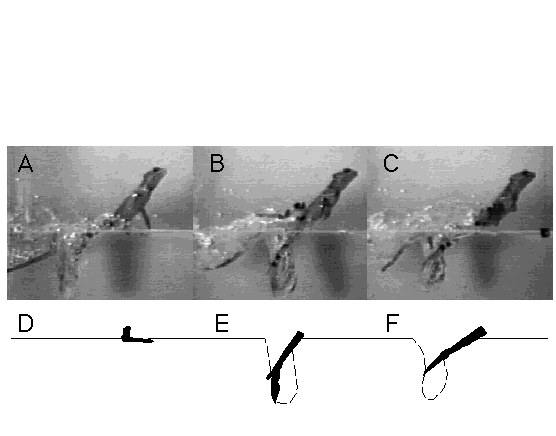Glasheen, J.W. and T.A. McMahon (1996a). A hydrodynamic model of
locomotion in the Basilisk lizard. Nature, 380:340-342.
Organisms with a body mass more than a gram which live at the air-water
interface generally support their weight with their buoyant bodies. The
maximum swimming speed these animals can attain is limited by wave-making
resistance. For high-speed progression across a body of water, shore birds
and basilisk lizards (Basiliscus basiliscus) support their bodies above
the water surface by repeatedly striking the surface with their feet. Here,
we investigate the mechanism of support in moderately-sized basilisk lizards
(~90 g) by combining hydrodynamic measurements of a physical model of the
lizards' feet with an analysis of video records of foot movements. We find
basilisks of intermediate size obtain little support for their body weight
by slapping the water surface; most of the support comes from stroking the
foot downward while expanding an air cavity underwater. The lizard minimizes
downward forces by pulling its foot upward before the cavity collapses.

